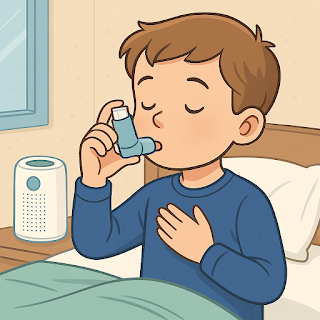How Trade Tariffs, Interest Rates, and the Dollar Shape Our Economy: Past Lessons and Everyday Impacts
Ever wondered why your grocery bill creeps up or why your car loan feels pricier? In 2025, trade tariffs, interest rates, and the U.S. dollar’s strength are pulling the strings behind these changes. As an economics enthusiast who’s tracked markets since the 2008 crash, I’ve seen how these forces ripple from global trade desks to your wallet. Let’s unpack their impact—past and present—with numbers and lessons that hit home.
A History of Tariffs: Echoes of the 1930s
Tariffs—taxes on imports—aren’t new. In 1930, the Smoot-Hawley Tariff Act raised U.S. tariffs to 20% on average, aiming to shield farmers and factories. Instead, it backfired: global trade fell 66% by 1934, deepening the Great Depression. Fast-forward to 2018, when tariffs on Chinese goods (10–25%) spiked prices for electronics by 5–10%. Today, 2025 sees tariffs climbing again—10% on most imports, 54% on China—stirring fears of inflation and slowdown.
History shows tariffs raise costs. My grandfather, a grocer in the 1930s, saw canned goods prices jump 15% overnight. Today, I notice my coffee beans—imported from Brazil—cost 8% more since last year’s tariff talks began. Numbers don’t lie: higher tariffs often mean higher bills.
The Tariff Effect: Prices and Jobs
Tariffs aim to boost local industries but come with trade-offs. In 2025, a 10% tariff on imported shoes could raise sneaker prices by $10–$20 a pair. Economists estimate tariffs add $3,800 per U.S. household annually in higher costs. Yet, they can save jobs—2018 steel tariffs preserved 8,700 U.S. jobs, though at a cost of $900,000 per job in consumer price hikes.
Retaliation is the wildcard. When China hit U.S. soybeans with a 25% tariff in 2019, exports dropped 74%, crushing farmers. In my town, a local auto parts shop lost 20% of its export orders last month due to Canada’s counter-tariffs. Here’s a breakdown:
| Factor | Impact | Example | Historical Parallel |
|---|---|---|---|
| Tariffs | +5–10% consumer prices | $50 TV now $55 | 1930: +15% food costs |
| Retaliation | -18% U.S. exports | 2025: Soybean losses | 1934: -50% trade |
| Jobs | +0.1% in protected sectors | Steel gains 8,700 jobs | 2002: Steel tariff fallout |
| GDP | -0.6% long-term | $160B annual loss | 1930s: -10% GDP |
Interest Rates: The Fed’s Tightrope
Interest rates shape how much you pay for loans—or earn on savings. In 2025, the Federal Reserve’s rate is around 4.5%, up from 2.5% in 2023, as it fights tariff-driven inflation (projected at 2.4% this year). Higher rates mean my friend’s $30,000 car loan now costs $600 more annually in interest. In 1980, rates hit 20%, and mortgages were untouchable—my parents waited years to buy a home.
Tariffs complicate things. If prices rise 2–3%, the Fed might hike rates to 5%, squeezing borrowers. But if tariffs slow growth (GDP down 0.9% in 2025), the Fed could cut rates to 4%, easing loans but risking inflation. It’s a gamble, and your monthly budget feels the pinch.
The Dollar’s Dance: Strong or Weak?
A strong dollar sounds great, but it’s a double-edged sword. In 2025, tariffs are pushing the dollar up 7.5% against global currencies, making imports 30–50% cheaper—my new phone from Japan cost $50 less. But it hurts exporters: a local winery I know lost 10% of European sales because their bottles are now pricier abroad.
In 1985, a super-strong dollar (up 50% from 1980) crushed U.S. manufacturing, leading to the Plaza Accord to weaken it. Today, a stronger dollar offsets some tariff costs but sparks fears of trade deficits—U.S. imports rose 63% from Mexico since 2018 despite tariffs.
Everyday Impacts: From Gas to Groceries
How does this hit you? Tariffs on Mexican avocados (25%) mean my guacamole costs 12% more. Higher interest rates bump my credit card APR from 18% to 20%, adding $40 a month to my balance. A stronger dollar saves me $15 on imported headphones but makes my cousin’s export business—selling furniture to Canada—lose $5,000 in orders.
Here’s how to navigate:
- Shop Smart: Buy local—80% of tariff-free goods are U.S.-made.
- Lock Rates: Fixed-rate loans dodge rising interest costs (saved me $200 last year).
- Watch Exports: If you work in trade, diversify markets—Asia’s demand is up 5%.
Looking Ahead: 2025 and Beyond
Tariffs, rates, and the dollar are a messy trio. History—like 1930’s trade collapse or 1980’s rate spikes—warns of overreach. In 2025, expect 2–3% inflation, 0.5% GDP dips, and a dollar up 5–10%. My grocery runs and loan payments already reflect this, and your wallet likely does too. Stay informed—check trade news, lock in rates, and lean local.
Final Thoughts
From 1930’s breadlines to today’s $4 coffee, tariffs, rates, and the dollar shape our lives. They’re not just headlines—they’re why my neighbor’s export job wobbles or why your rent feels tighter. Got a story about prices or loans hitting you? Share below—I’m all ears.


